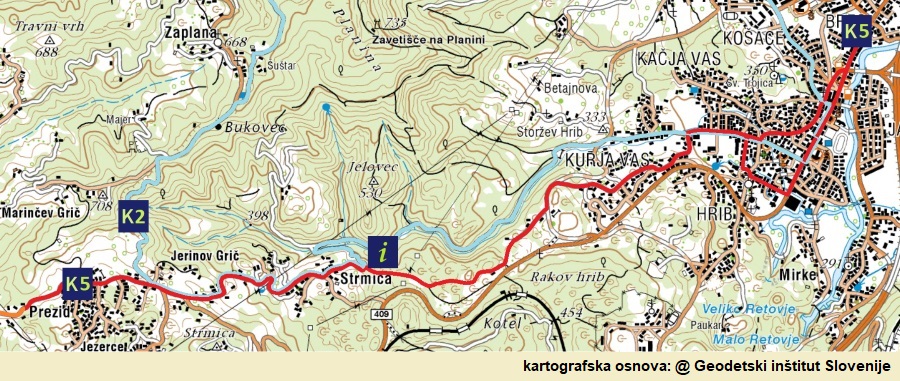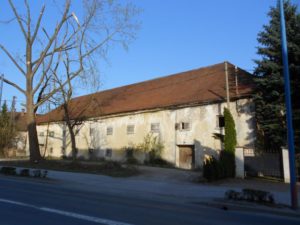

 The road connecting Idrija with Vrhnika was built around 1508, soon after the discovery of mercury (1493), and until 1721 it was the only road connection from Idrija. It is intended to supply the mine with timber, equipment, food and the transport of mercury ore to the world. It is taken from the Gewerkenegg castle in Idrija across Kovačev Rovt to Zaplana and Vrhnika. Oral tradition says that soon after the start of mining in Idrija, the chaplain from Rovte measured the length of 13,994 Idrija klafters. This measure of length (klaftra) was used in a mercury mine and is the height of one wooden cave support or about 1.6 meters. It is also used by the architect Podrecca in the arrangement of the town square in Idrija. When the Southern Railway is built with a station in Logatec, the transport of mercury on horseback on this road almost dies.
The road connecting Idrija with Vrhnika was built around 1508, soon after the discovery of mercury (1493), and until 1721 it was the only road connection from Idrija. It is intended to supply the mine with timber, equipment, food and the transport of mercury ore to the world. It is taken from the Gewerkenegg castle in Idrija across Kovačev Rovt to Zaplana and Vrhnika. Oral tradition says that soon after the start of mining in Idrija, the chaplain from Rovte measured the length of 13,994 Idrija klafters. This measure of length (klaftra) was used in a mercury mine and is the height of one wooden cave support or about 1.6 meters. It is also used by the architect Podrecca in the arrangement of the town square in Idrija. When the Southern Railway is built with a station in Logatec, the transport of mercury on horseback on this road almost dies.
Maria Theresa, ruler of the Habsburg lands
The Mecury

The mercury warehouse (16th century)
For the needs of storing mercury before transporting it along the Ljubljanica to Ljubljana, opposite the former cargo port of Nauportus, a warehouse was built in 1510, an eleven-axis two-storey building with a symmetrical gable, with stone frames, wrought iron nets and wooden porticoes. Mercury storage and transport along the Ljubljanica lost its significance when the Southern Railway from Vienna to Trieste was built and the role of a transshipment station was taken over by Logatec, which was not bypassed by the railway.
Interesting:
Mercury is loaded and stored in tightly closed iron containers in the form of bottles called cylinders.

Comments are closed